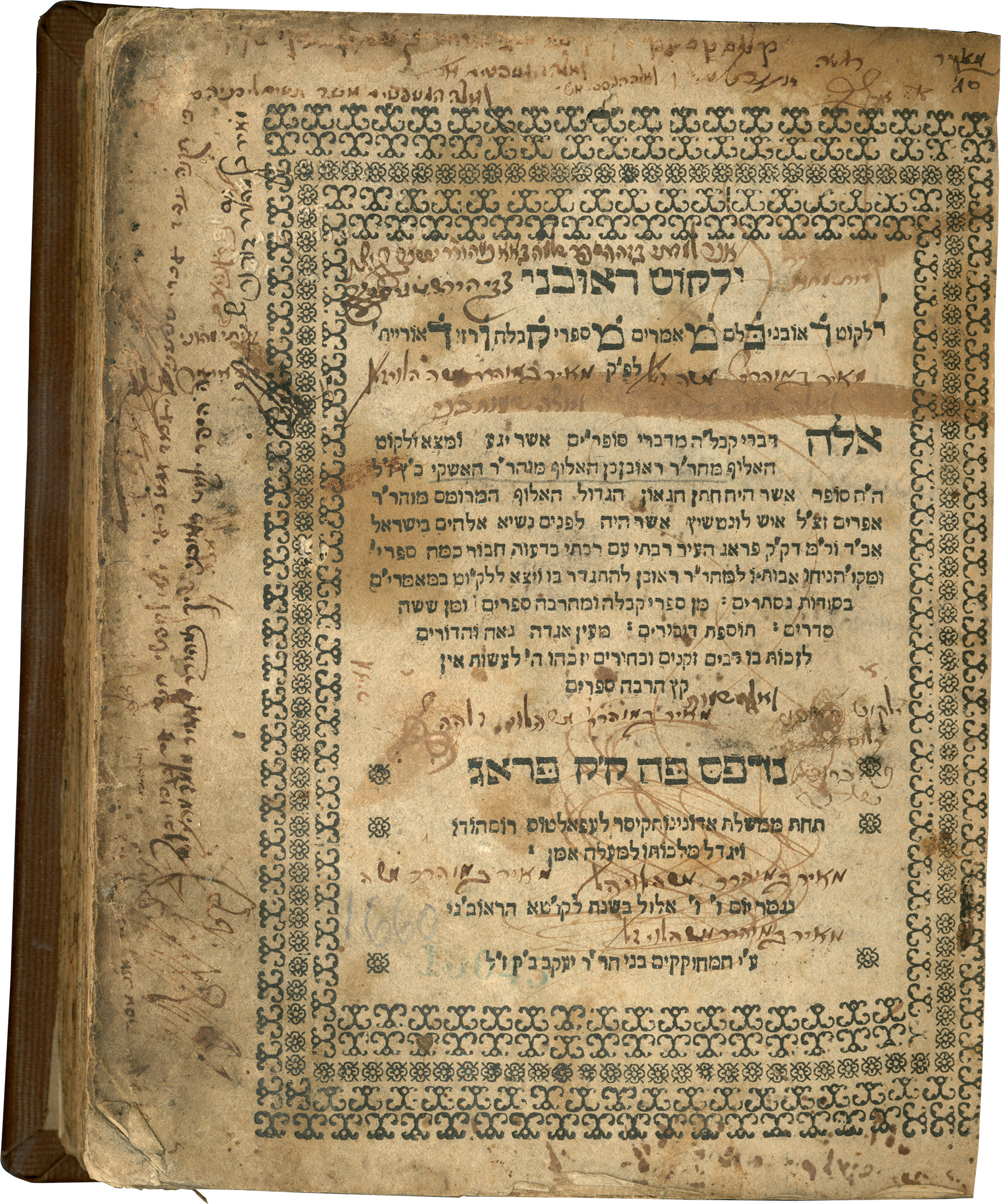The Rare Book Room at the Library of the Herbert D. Katz Center is home to a copy of the first printed edition of the Yalḳuṭ Reʾuveni: eleh divre Kabalah mi-divre sofrim / asher yagaʻ u-matsa (translation: the Collectanea of Reuven: these are words of (mystical) tradition from writers' words/ that he toiled and found), issued in Prague in 1660 at the printing press of the sons of Ya'akov (Jacob) Ba"k (The last name Ba"k ב"ק, an abbreviation, may refer to Bene Kedoshim, literally "sons of saints", signifying that a forefather or -mother had suffered a violent death at the hands of non-Jews; it also may refer to an ancestor who was a Ba'al Kore, a type of cantor). The editor is Reuven ben Hoske (d. 1673; in other sources Hoeshke and Hoeshke ben Hoeshke, a form of the name Yehoshua, Joshua) Katz. Notably, the copy held at the Library of the Katz Center is interspersed with a very erudite handwritten commentary by an East European Jew by the name of Horowitz.
Yalkut Re'uveni exists in two entirely different editions. The earlier, Prague 1660 printing, also known as the "small" Y"R, is an alphabetical lexicon of various themes and items especially from Kabalistic and mystical books. The "big" Y"R, Wilmersdorf edition of l681, follows the order of the Pentateuch like the older yalkuts and it includes much more materials than the earlier edition. According to the secondary literature as well as the various book inventories and lists that I have seen, this rare printed edition is the original form of the book. There are quite a few manuscripts of the book but they are all from the eighteenth and the nineteenth century, thus most probably copies based on the printed edition or copied from other hand written copies of the first printed edition. The paleographic details given in various catalogues point to a wide distribution and interest in the book in countries spanning from North West Germany to Yemen. Today there are copies in many libraries, among them in Hamburg, Goettingen, Strasbourg and Philadelphia!
The genre of the book is a yalkut, derived from the Hebrew word to collect. According to Jacob Elbaum, one of the few scholars who have specialized in this genre, it emerged a couple of centuries after the end of the classical Rabbinic literary production of Midrash and Talmud literature. The Yalkut blossomed as a genre during two pre-modern periods: in the 13th-14th centuries CE, in works that have come to be known as the Yalkut Mekhiri and the Yalkut Shim'oni, elaborating on the books of the Bible; in the 16th-17th centuries CE, to which our specimen belongs. In the 16th century, two major collections of rabbinic literature were published by Jews in the Ottoman Empire; Ein Ya'akov and Hagadot ha-Talmud. The seventeenth century yalkut literature catered to the need to provide access to the then already voluminous libraries of Kabbalah and mysticism.
